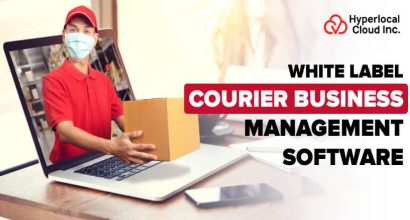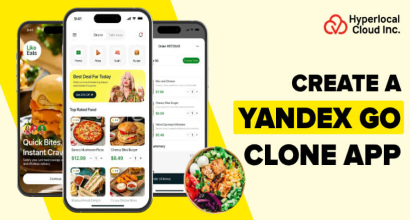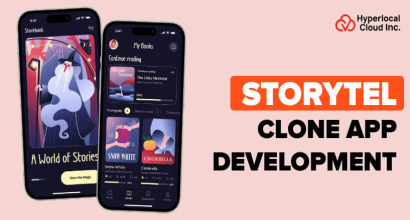Today, the social media presence and the tremendous impact of influencers have boosted the craze of aesthetic culture worldwide. Now, whether it's homeowners, real estate developers, or corporate business owners, everyone wants a visually appealing and engaging space. This is where apps like Homestyle come into front, which help users design, decorate, and visualize beautiful interiors with ease. A renowned report predicts that the home styling app market will reach USD 4,151.2 million by 2031, underscoring the increasing demand for these innovative solutions. However, building an entire app from scratch turns out to be an expensive and complex job, especially if you own a startup with budget constraints. Therefore, the best alternative is to use the Homestyle clone app, which offers similar functionality to the original but with additional customization options.
The blog explains about the Homestyler app clone, its features, cost, monetization strategies, and more.
Detailed Information About Homestyler App Clone
Homestyler Clone app- An interesting interior designing platform, unlike the original Homestyler app, where users can design and visualize their floor in 2D and 3D views. It includes various fascinating features, such as a vast library of furniture and accessories, to make their spaces visually appealing and engaging.
Working Scenario of Homestyler Clone App
The following pointers outline the step-by-step working process of an efficient Homestyler clone app, ensuring a smoother user experience.
1. Create an Account and Set Up Your Space
First, users sign in to the application by entering their contact details, email addresses, or social media credentials.
2. Start a Design
Upon entering, the user can click "Create a New Design" and start designing from scratch. They can also upload background images or choose a gallery design according to their preference. The app provides powerful 2D/3D design tools and a library of real furniture and decor items.
3. Design the Room in 2D
In 2D, the user can draw walls and insert doors and windows to create the desired room layout.
4. Switch to 3D view
Once the user completes the floor plan, they can switch to a 3D view to visualize the entire space.
5. Decorate the Furniture
The app provides an extensive library of real furniture, such as tables, tiles, lights, and accessories, that users can use to decorate their rooms. They can also change the wall and tile colors to check the overall appearance.
6. Visualize the Room
Once the user finishes the design, they can visualize the entire view in 3D. The app also allows them to use AR to check the design in their real room through their phone.
7. Save and Share
After finishing, users can save their design, download it, or share it with friends, family, or clients.
Hire the Best Developers to Create A 3D House Design App Like Homestyler !
Feature Set of Efficient Homestyler Clone App
The innovative Homestyler clone offers numerous beneficial features to enhance users' overall experience. Refer to the pointers below for explanations of the features for both administrators and users, along with their respective technical stacks.
For Admin
1. User Management: The app enables administrators to efficiently manage user registrations, roles, and permissions.
2. Project & Design Oversight: The admin can monitor, manage, and moderate design projects uploaded by users for quality control.
3. Content Moderation: TensorFlow, the OpenAI Moderation API, and Firebase Cloud Functions enable the admin to identify and automatically flag inappropriate or low-quality content.
4. Subscription & Billing Management: The app utilizes Stripe, Razorpay, Node.js, and Firebase to efficiently manage premium plans, pricing, discounts, and user subscriptions.
5. Analytics & Reports Dashboard: Google Analytics, Power BI, Chart.js, and Firebase Analytics track app usage, user behavior, design trends, and financial insights via real-time dashboards.
6. Inventory & Asset Library Control: Unity3D, AWS S3, PostgreSQL, and REST APIs allow the admin to manage 3D assets, textures, furniture items, and brand integrations in the design library.
7. Push Notification Management: The admin can access the notification settings to send targeted updates, promotional offers, or design tips to users via notifications.
8. Designer Verification & Onboarding: The admin can approve or verify professional interior designers or architects joining the platform.
9. App Settings & Customization: REST APIs and AWS Parameter Store enable administrators to control themes, logos, language support, and app settings for consistent branding.
10. Feedback & Complaint Resolution: Zendesk/Freshdesk APIs, Firebase Firestore, and Node.js enable the admin to handle support tickets, design feedback, and user issues through a dedicated system.
For Users
1. 3D Floor Planner: Unity3D, WebGL, Three.js, and React Native allow users to design interactive 2D & 3D floor plans for homes, offices, or interiors using drag-and-drop tools.
2. Room & Layout Customization: The project incorporated Three.js, WebGL, Babylon.js, and Firebase, which allows the admin to customize wall dimensions, furniture placements, colors, textures, and more in real-time.
3. Furniture & Decor Catalog: The app features a vast library of branded furniture, decor, and fixtures that users can access to design their rooms according to their preferences.
4. Augmented Reality View: The AR technology enables users to view their room designs in real space for better visual placement and an enhanced experience.
5. Save & Export Design: Users can also save projects in their profile or export them as image files, PDFs, or 3D models.
6. Social Sharing & Collaboration: The app incorporates the Facebook/Instagram SDK, enabling users to share their designs on social media or invite others to co-design and leave comments.
7. User Profile & Design History: The app enables users to track their uploaded projects, previous edits, and saved designs in a single, personalized dashboard.
8. In-App Tutorials & Support: The app features in-app video guides, tooltips, and live chat support to help users effectively utilize the design tools.
Next-Gen Technologies Integrated in Homestyler App Clone
A Homestyler app clone makes the homestyling task easier and more engaging, streamlining the user's journey. The following innovative technologies are included in the Homestyler app clone.
AI Chatbots for Quick Assistance
The integration of powerful AI chatbots helps provide users with instant support. Its intelligent algorithms understand users' input and provide responses that are human-understandable.
AI/ ML models for Personalization
Incorporated AI/ML models track users' previous preferences to analyze their preferences and provide personalized recommendations on furniture, color themes, walls, doors, lighting, and windows, enhancing the overall experience.
VR/ AR Technology for Virtual Tour
The intelligent VR/ AR technology in the Homestyler app analyzes existing spaces, user preferences, and design styles to create 3D images for a more realistic view. This helps users to try different styles to visualize their ideas and make informed decisions.
Cloud-Based Platform
Cloud computing technology in the Home design app allows users to access designs from any device, even without an internet connection. It also enables multiple users to work collaboratively on the same design and share it with their friends, enhancing their experience.
Computer-Aided Device
The Homestyler clone app utilizes Computer-Aided Design (CAD) and Artificial Intelligence to help users design 2D and 3D floor plans, providing a realistic view of the final result.
Empower Users to Design Dream Spaces With Our Homestyler Clone App!
Industrial Benefits of Homestyle App Clone
Every business wants to create an attractive interior. After all, it helps attract new customers and increases the client base. Below is the list of businesses that utilize the innovative homestyle app clone.
Real Estate
In the real estate industry, brokers often share standard property photos with customers, which may not fully showcase the property's potential and lead to lost sales. Therefore, many agents prefer to integrate Homestyler clone app capabilities with their room rental websites to make their properties look more visually appealing, furnished, and decorated, thereby engaging buyers' interest in making an offer.
Schools
The traditional education system may be effective in some places, but it has several drawbacks, including limited personalization and rigidity. However, an efficient Homestyle app clone is the real solution, as it provides flexible learning schedules and personalized lessons tailored to students' knowledge, making the learning experience more engaging and interactive.
Homeowners
Every person wants a home where they can seek comfort, peace, and ambiance, and a Homestyle app is the finest way to achieve this. Homeowners can utilize this exceptional software to design their floor plans and decorations, including furniture, lighting, and textures, in both 2D and 3D views. This helps them make informed decisions before renovations.
Brands and Retailers
Only a retailer can truly appreciate the importance of presenting their products effectively through visual merchandising. Of course, it impacts customer engagement, sales, and overall reputation. That is why they contact highly professional developers to create a 3D homestyle app, which showcases real product visualization to enhance the customer experience and boost overall sales.
Powerful Tech Stack Used to Create A 3D House Design App Like Homestyler
The table below outlines the powerful technologies utilized to develop a feature-rich Homestyle clone app.
| Technology | Type |
| Frontend (User Interface) | React Native / Flutter, HTML5, CSS3, JavaScript |
| Backend (Server-Side Development) | Node.js / Python |
| 3D Modeling & Rendering Tools | Blender / Autodesk APIs |
| Database | MongoDB / PostgreSQL |
| Cloud & Hosting Services | AWS / Google Cloud / Azure |
| Authentication & Security | OAuth 2.0 / Firebase Auth/JWT |
| Third-Party Integrations | ARKit / ARCore |
| Deployment & DevOps | Docker / Kubernetes |
Step-by-Step Procedure to Develop Homestyler App
A professional on-demand mobile app development company with skilled developers is crucial to building a robust homestyle clone app. The team takes a strategic approach, utilizes an advanced tech stack, and incorporates innovative technologies to build feature-rich clone solutions. The team follows a set of steps to create an efficient Homestyler app.
Comprehensive Research
First, they conduct comprehensive market research to understand the ongoing trends and growth points. Later, they determine the features, functionalities, and integrations needed to enhance the application, catering to the target audience and supporting business growth.
App Designing Phase
They utilize color contrasts, employ large fonts, and incorporate prominent icons to capture the user's attention. They also focus on creating a simple, minimalist design to avoid clutter and for smoother navigation.
Development Phase
In this phase, developers focus on server-side logic, including user authentication, database management, and integration capabilities. They utilize a robust tech stack comprising highly functional programming languages, APIs, and frameworks to ensure the app functions correctly, manages data accurately, and interacts seamlessly with external services.
Comprehensive Testing
Next, a dedicated Q&A team utilizes Selenium, Cucumber, Espresso, and Katalon Studio testing tools and frameworks to identify and mitigate errors, ensuring the app runs smoothly without any glitches.
Launching Process
After comprehensive testing, developers launch the application on the dedicated launching platform, including the Apple Store, Google Play Store, and Samsung Galaxy apps.
Maintenance & Support
Ultimately, the team monitors the app's performance and provides consistent technical support to update servers, add features, and make adjustments based on user feedback and market trends.
Factors Affecting the Development Cost of Homestyler Clone App
The estimated development cost of the Homestyler clone app starts at $5,000. However, some factors affect its accurate pricing.
UI/UX Interface
Creating a visually beautiful interface requires the addition of multiple elements, animations, color contrasts, and precise icon placement. All these require dedicated development time and effort, potentially increasing the overall cost.
Backup Infrastructure
A strong backup includes a database, servers, APIs, frameworks, and external integrations. Developers utilize a robust tech stack and meticulous approach, which increases their effort and overall development cost.
Development Team Expertise
Hiring highly skilled developers with specialized knowledge in advanced technologies and tech stacks may be more expensive, but they can complete development more quickly with fewer features, which is worth it.
Third-Party Services
Indeed, third-party services enhance the app's functionality; however, these integrations, such as payment gateways and analytical tools, incur subscription fees and necessitate additional development costs, ultimately resulting in higher overall development expenses.
Security Features
The testing process requires regular security audits and the use of additional testing tools, which can extend development time and increase development costs.
Revolutionize Your Business With Homestyler Clone App!
Revenue Generating Strategies of Homestyler Clone App
There are various ways to generate revenue from an ideal Homestyler app clone, some of which are given below.
Freemium Model
In the freemium model, the admin can offer basic features for free to users while charging for access to premium or advanced features, thereby generating good revenue.
Subscription Plans
Here, various plans are created, including basic, standard, and premium, each featuring distinct benefits. The admin can charge a recurring fee from users on a weekly, monthly, or yearly basis.
In-App Advertisement
Contact various brands, feature their product ads within the application, and generate revenue from every click.
Partnership with Other Businesses
Partner with various furniture and home decor brands, charging a commission on every purchase made through their app's product links.
Choose Hyperlocal Cloud to Build Innovative Clone Apps
Hyperlocal Cloud Inc. is a top-notch on-demand mobile app development company. Its skilled team of designers and developers has a deep understanding of emerging technologies, enabling them to build transformative mobile apps and software solutions. Over the years, we have gained experience offering innovative solutions across multiple industries to help businesses expand and increase their return on investment (ROI).



